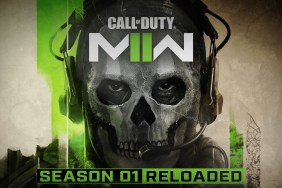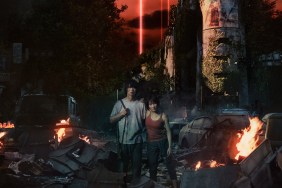The M16A4 is for nancies, partner.
Like watching porn with your grandparents, sometimes adding an outside perspective can inspire you to feel things you’ve never felt before. So it is with the Western genre. Non-American filmmakers have a long history of reinvigorating the genre, and Polish game developer Techland has now made what is arguably the most authentically Western game yet on a console. Call of Juarez: Bound in Blood captures all the rugged mood, dirty history, and gritty action of the film genre and translates it into a compelling—if occasionally misguided—video game experience.
[image1]Bound in Blood begins by paying homage to the most famous film Western ever made outside the U.S.: Sergio Leone’s classic Spaghetti Western, The Good, the Bad, and the Ugly. In this opening sequence, you find yourself in the middle of a Civil War skirmish that culminates in the dynamiting of a bridge under the command of a hirsute Lee Van Cleef look-alike.
From there the game turns into a 19th-century road trip, winding its way through a series of iconic Western locales: dusty pueblos, Navajo villages, rickety mines, open desert, ghost towns, and so on. These environments are far and away Bound in Blood’s strongest asset, and I frequently found myself distracted in the midst of intense shootouts because of an entrancing desert panorama or hypnotic dust devil. Though my kill-death ratio took a nosedive, at least I enjoyed the ride.
While the core shooting mechanics aren’t substantially different from those of a standard FPS, the feeling of walking into an old saloon with twin six shooters blazing simply can’t be achieved by games set in the 20th century. Bound in Blood returns us to a time when real men were judged by how hard a gun kicked rather than how much damage it dealt, a time when it took longer to reload your pistols than to saddle your horse.
Bound in Blood also incorporates some light RPG elements. There are a handful of open-world sections where you can roam around helping villagers, shooting bandits, rescuing cattle, and collecting bounties. You then put your extra money to use by buying better weapons. Because the rest of the game is so linear, it’s strange—and strangely appealing—to come across these few sections in the game. These sequences look and play a lot like a miniature, less mutant-filled version of Fallout 3, and give a small taste for what a (non-Westernized) Western-themed RPG might look like.
[image2]The game also lets you choose between playing as one of two brothers, each specializing in different weapon types. Ray is the tough guy who prefers his guns big and loud, while Thomas is more into sharp, pointy things like knives and arrows. Ultimately, though, there’s no need for the two different characters, since there’s no reason why all of these abilities couldn’t be combined into a single character and left to the player to decide which abilities to use.
Similar to the first Call of Juarez, there are also a handful of duels that occur at key moments in the game. You must circle to the right or left of your opponent to keep a line on him, all while keeping your hand close—but not too close—to your hip. At the toll of a bell, you must quickly move your hand to your holster and fire as the reticule passes over your opponent. It’s a tricky set of movements to time correctly, and the do-or-die outcome makes it as annoying as a quick-time-event; however, the duels fit the mood of the game perfectly, and thankfully they won’t stump you for very long.
Considering all that Techland gets right in their take on the Western, it’s disappointing to see them fumble so badly in their storytelling. For developers who seem to know so much about the genre in terms of setting and mood, they don’t understand Western plot conventions in the slightest. The story’s a meandering mess of multiple villains, double-dealing women, faux-rugged heroes, terrible accents, sloppy racial stereotyping, and unmoving tragedy. Worse, the object that everyone’s after for the whole game ultimately serves no purpose whatsoever—one of the most absurdly flagrant Macguffins I’ve ever seen in a game.
Ordinarily, I can forgive a game its narrative shortcomings, especially when the gameplay is so much fun, but Techland shoves story down your throat at every turn with overlong cinematic sequences and god-awful voice-over narration. The length and frequency of the cinematics only increases as the game progresses, emphasizing just how bad the story is. Mercifully, the single-player campaign is short.
[image3]Bound in Blood also includes capable, though unremarkable, multiplayer gameplay. Similar to most other recent shooters, there are different character classes, upgrades, and unlockables, as well as the standard array of play types. It adds some legs to an otherwise relatively short experience, but it doesn’t offer anything that other FPS games don’t already do better.
Luckily, the strengths of Call of Juarez: Bound in Blood outweigh its few shortcomings. The cinematic sequences are easily skipped at the press of a button, and what remains is a tremendously engaging Western romp. It isn’t yet the epic Western that fans of the genre deserve, but Bound in Blood suggests that such a thing is undeniably possible. If a bunch of Brits can create a ‘90s-era American gangsta masterpiece, there’s no reason Techland couldn’t pull off a similar feat.
-
Beautiful environments
-
Varied gameplay
-
Moody Western
-
Competent multiplayer
-
Terrible storytelling










